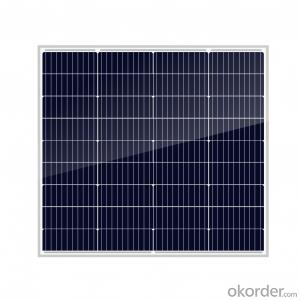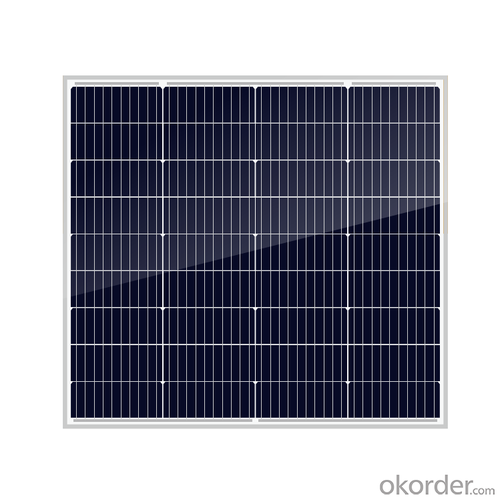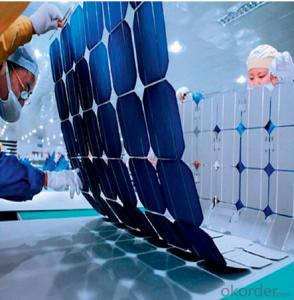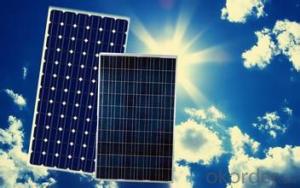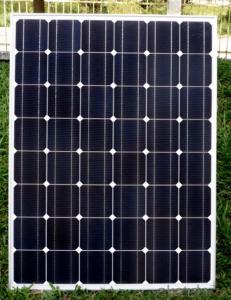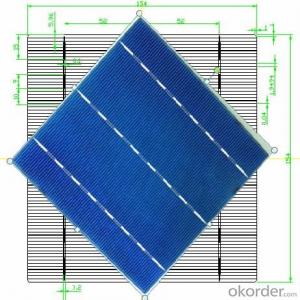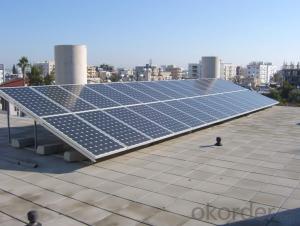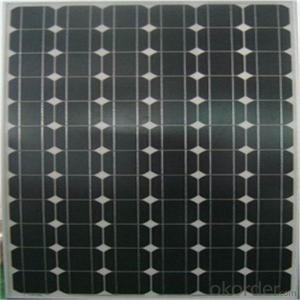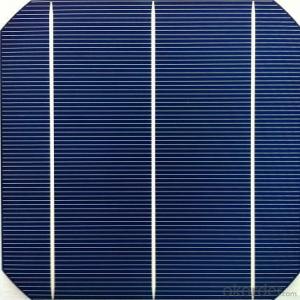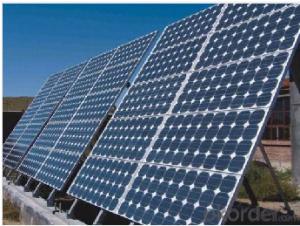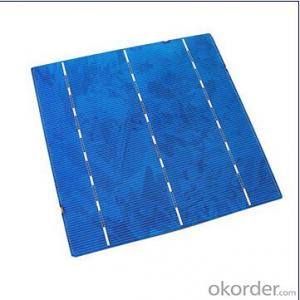100w Half Cut Monocrystalline Silicon Solar Cells PV Module 182mm 36cells 210mm 32cells CNBM
- Price:
- US $43.47 / pc
- Loading Port:
- SHANGHAI
- Delivery Time:
- 15 days after your payment
- Quantity:
- Shipping:
- Freight Cost Calculator
OKorder Service Pledge
Quality Product, Order Online Tracking, Timely Delivery
OKorder Financial Service
Credit Rating, Credit Services, Credit Purchasing
You Might Also Like
Specification
Material:
Monocrystalline Silicon
Max. Power(W):
100
Number of Cells(pieces):
32
100W Monocrystalline Silicon Solar Cells PV Module 182MM 36Cells


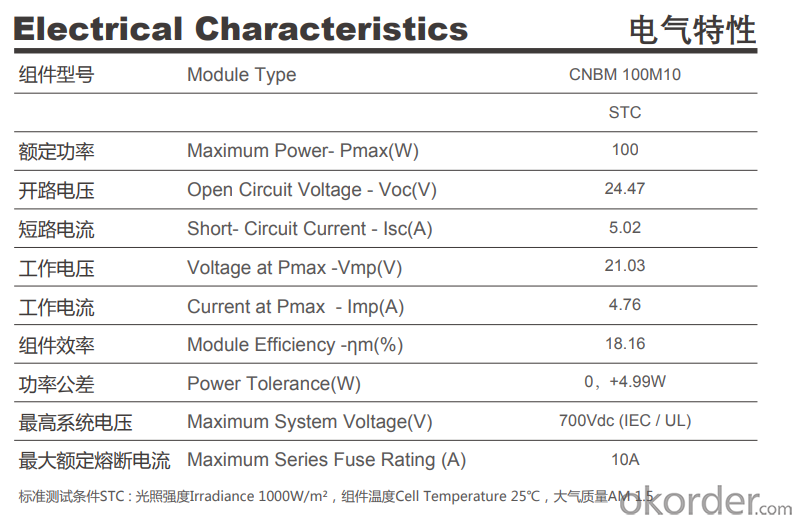
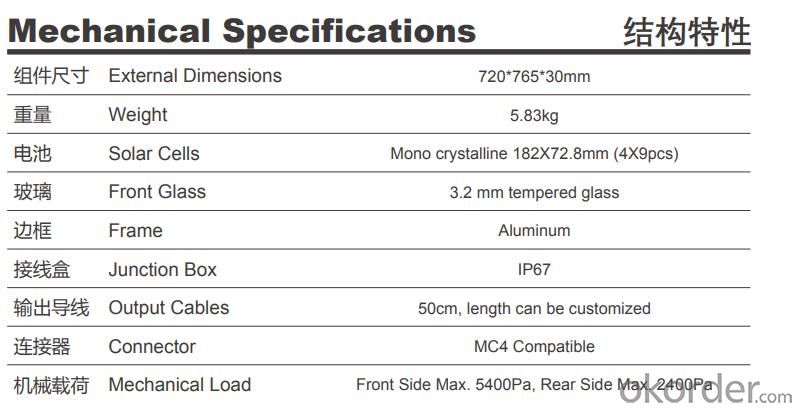
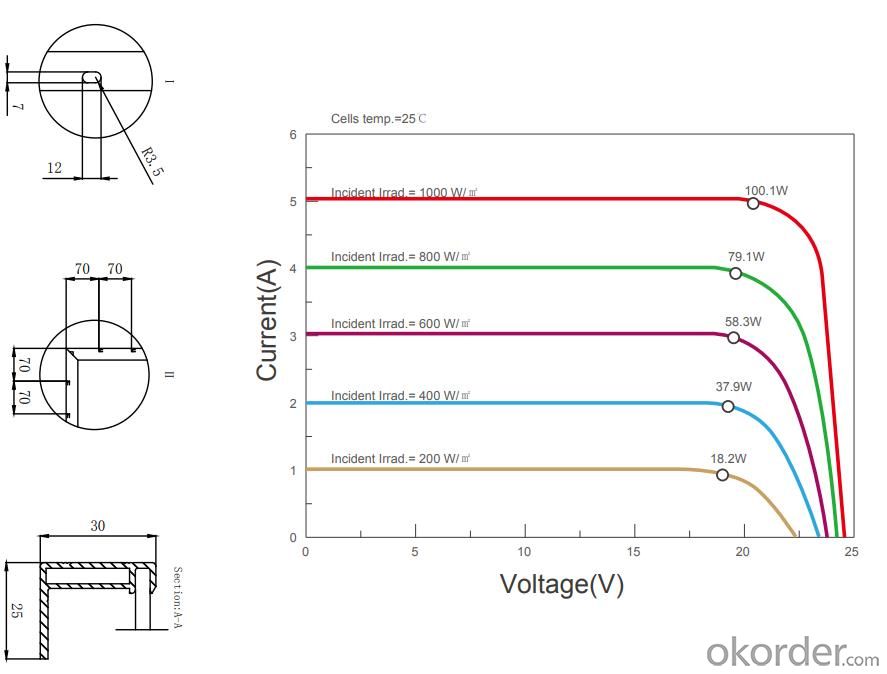
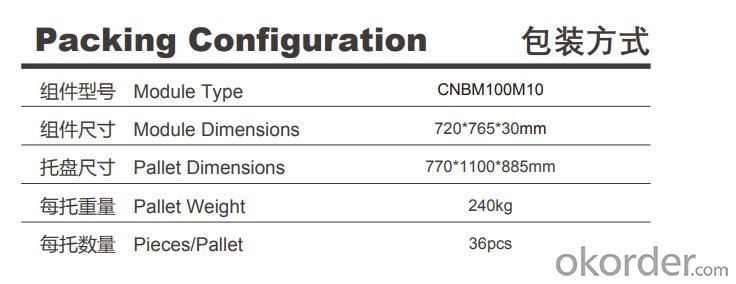
- Q: How many solar cells are there in a solar panel?
- The number of solar panels in an installation depends on a few factors, mainly the amount of physical space available for the installation.
- Q: What are the maintenance requirements for solar cells?
- The maintenance requirements for solar cells are minimal. They generally require regular cleaning to remove dust or debris that may accumulate on the surface, and occasional inspection to ensure proper functioning and detect any signs of damage or wear. Additionally, it is recommended to check the connections and wiring periodically to ensure they are secure. Overall, solar cells are known for their durability and low maintenance needs.
- Q: How do solar cells affect air pollution?
- Solar cells help reduce air pollution by producing electricity without emitting harmful pollutants or greenhouse gases. Traditional energy sources such as coal, oil, and gas power plants release pollutants like sulfur dioxide, nitrogen oxide, and carbon dioxide, contributing to air pollution and climate change. Solar cells, on the other hand, convert sunlight directly into electricity, generating clean and renewable energy. This reduces the need for fossil fuel-based electricity generation, thereby reducing air pollution and improving air quality.
- Q: What is a thin-film solar cell?
- A thin-film solar cell is a type of solar cell that is made using very thin layers of semiconductor materials. These layers are typically only a few micrometers thick, which makes the solar cell much lighter and more flexible compared to traditional solar cells. Thin-film solar cells are less efficient at converting sunlight into electricity but are more cost-effective and can be used in a wider range of applications.
- Q: How to make solar cells in a scientific way?
- After you collect all the stuff you need, you should follow steps like this: 1.Cut the copper sheeting 2. After cleaning the copper, you can start to burn it. 3. Place the copper in a jar after it is washed carefully. 4.Before you put salt into it, you should also connect the alligator clips. 5. Put it under the sun and you can get your solar cells working.
- Q: Can solar cells be used in medical devices?
- Yes, solar cells can be used in medical devices. Solar cells can provide a renewable and sustainable source of energy for various medical devices, such as remote monitoring systems, wearable devices, and even implantable devices. They can help eliminate the need for frequent battery replacements and provide continuous power supply, making them particularly useful in remote or resource-limited areas.
- Q: Can solar cells be used for off-grid power systems?
- Yes, solar cells can definitely be used for off-grid power systems. Solar cells, also known as photovoltaic cells, convert sunlight directly into electricity and can be used to generate power in remote locations that are not connected to the main power grid. These cells can be installed on rooftops, in open fields, or even on portable devices to generate electricity for various off-grid applications such as powering homes, cabins, or other remote facilities.
- Q: Can solar cells be used for powering remote data collection devices?
- Yes, solar cells can be effectively used for powering remote data collection devices. Solar cells convert sunlight into electricity, providing a sustainable and reliable source of power in areas where access to conventional electricity may be limited or non-existent. By harnessing solar energy, remote data collection devices can operate autonomously without the need for frequent battery replacements or external power sources, making them ideal for applications such as weather monitoring stations, wildlife tracking devices, or environmental sensors in remote locations.
- Q: How do solar cells handle power fluctuations?
- Solar cells handle power fluctuations by using a device called an inverter. The inverter converts the direct current (DC) produced by the solar cells into alternating current (AC) that is suitable for use in homes and businesses. It also helps to regulate and stabilize the power output, ensuring a consistent and steady flow of electricity despite any fluctuations in sunlight intensity or changes in load demand.
- Q: Can solar cells be used on rooftops with different orientations?
- Yes, solar cells can be used on rooftops with different orientations. While the ideal orientation for maximum energy production is typically south-facing, solar panels can still generate electricity when facing east, west, or even north. However, the energy output may vary depending on the orientation, so it's important to consider factors like shading and angle adjustments to optimize their performance.
Send your message to us
100w Half Cut Monocrystalline Silicon Solar Cells PV Module 182mm 36cells 210mm 32cells CNBM
- Price:
- US $43.47 / pc
- Loading Port:
- SHANGHAI
- Delivery Time:
- 15 days after your payment
- Quantity:
- Shipping:
- Freight Cost Calculator
OKorder Service Pledge
Quality Product, Order Online Tracking, Timely Delivery
OKorder Financial Service
Credit Rating, Credit Services, Credit Purchasing
Similar products
Hot products
Hot Searches
Related keywords
